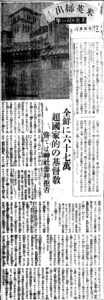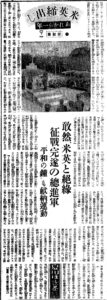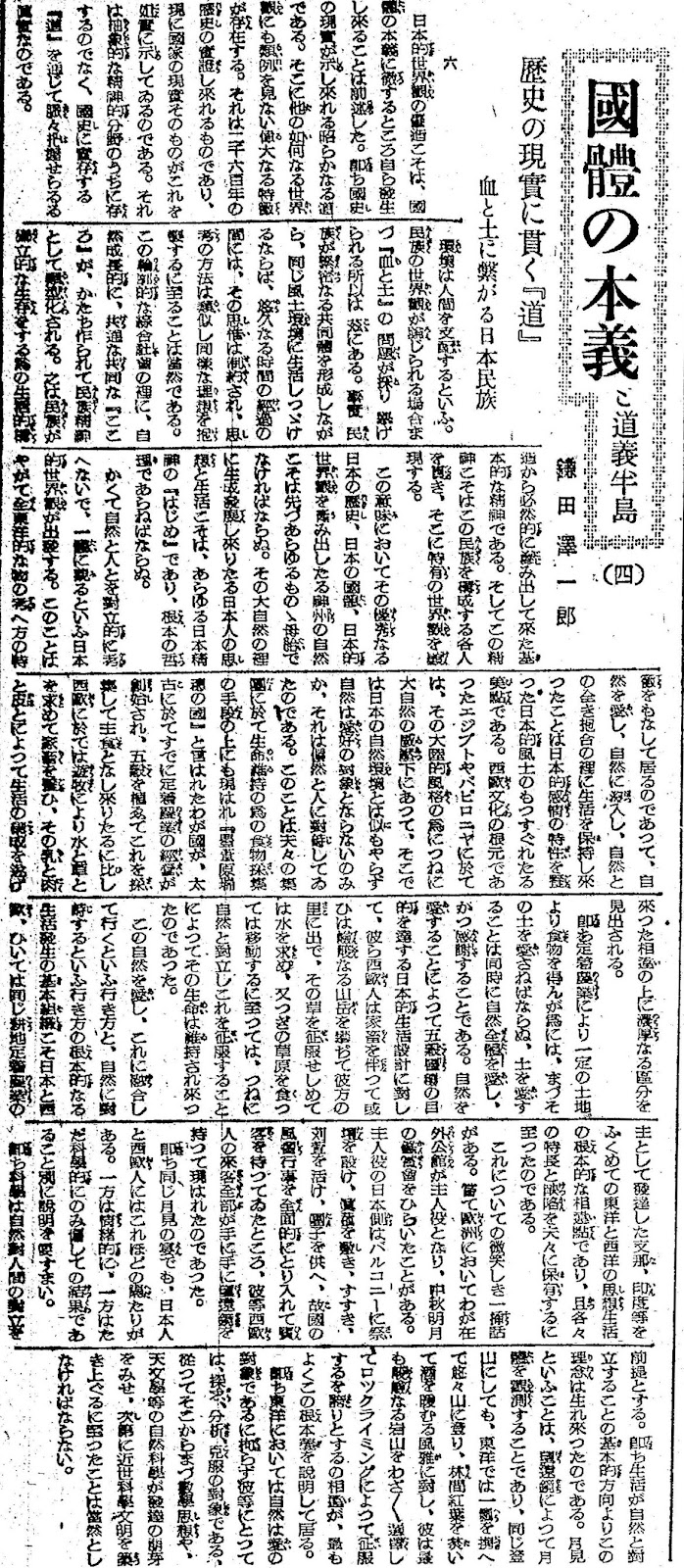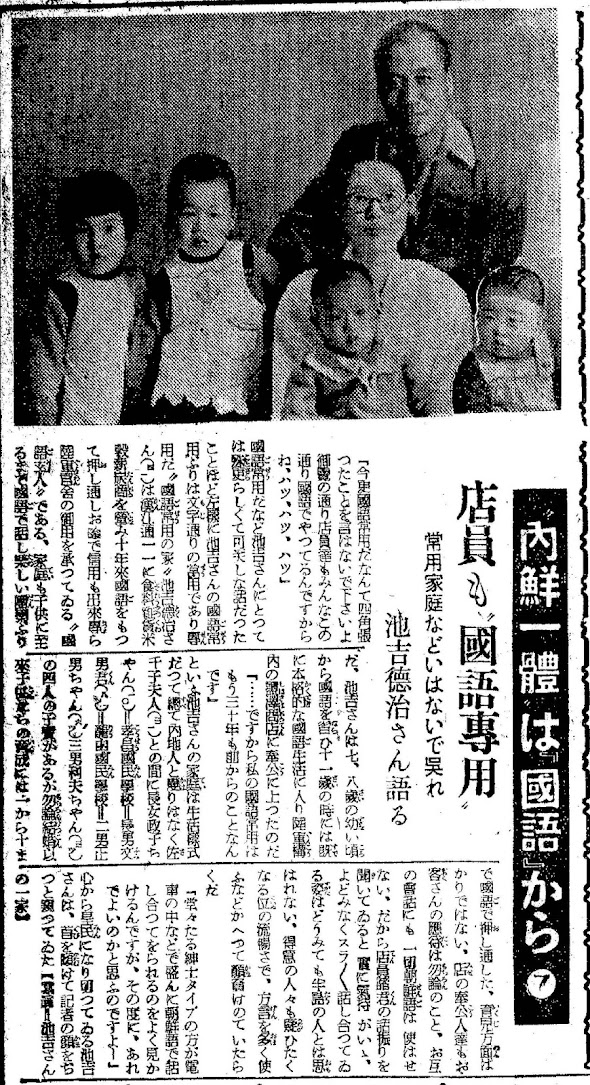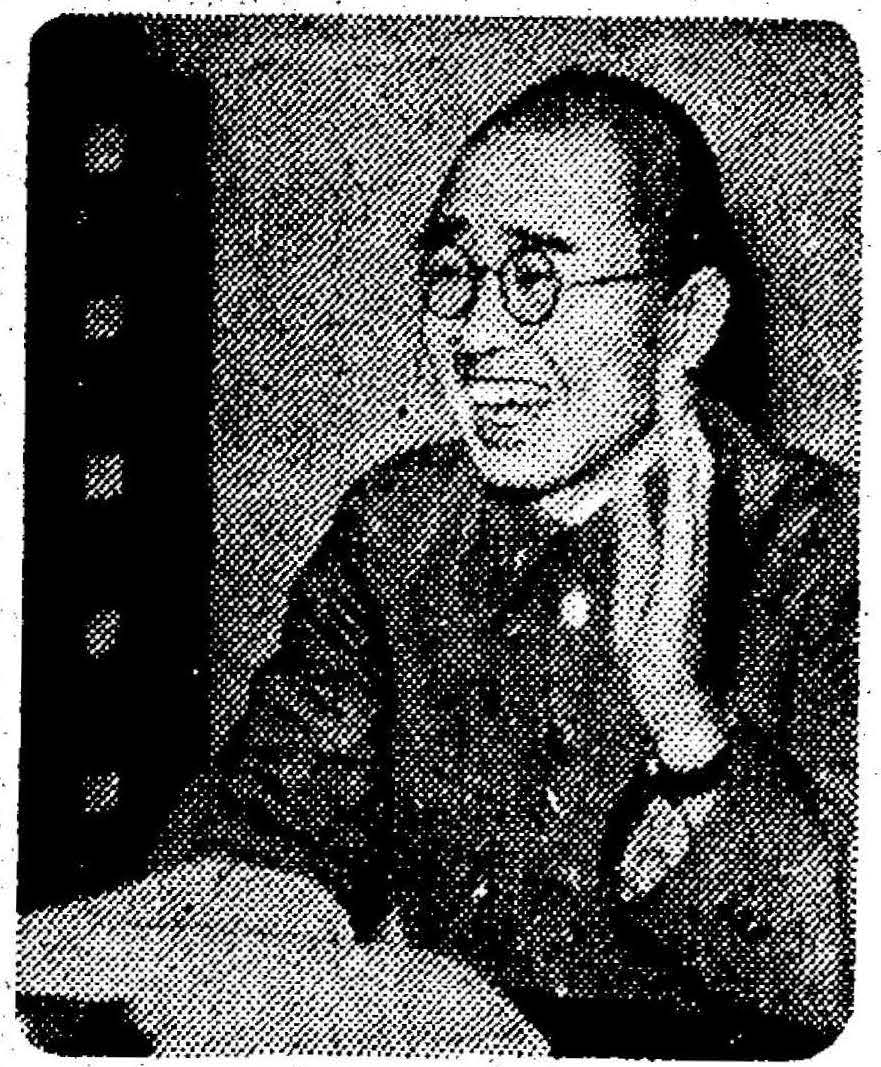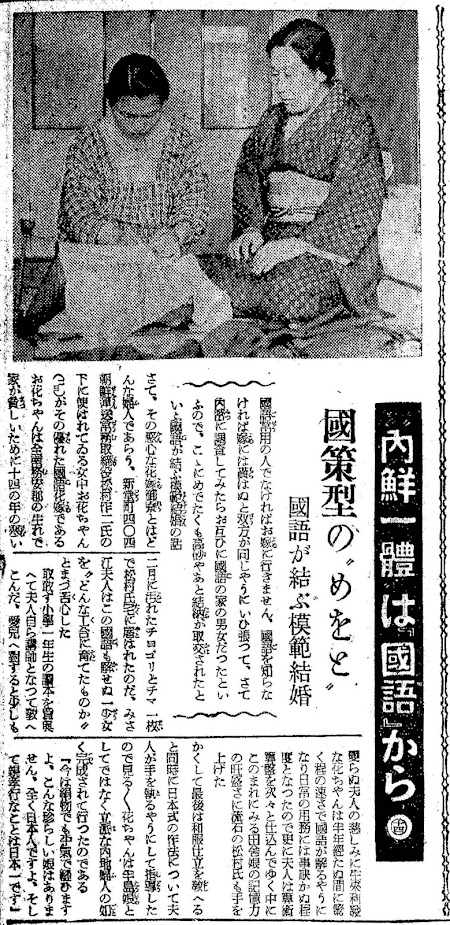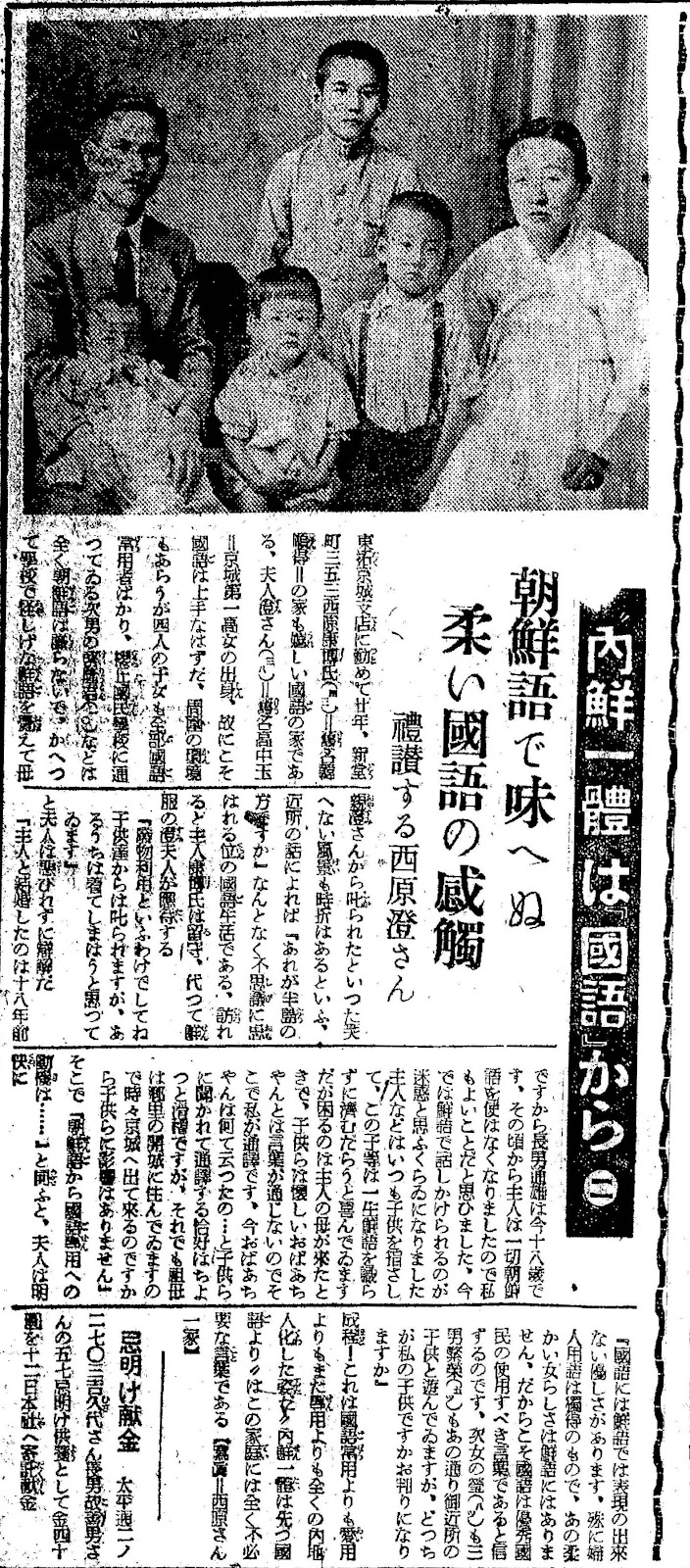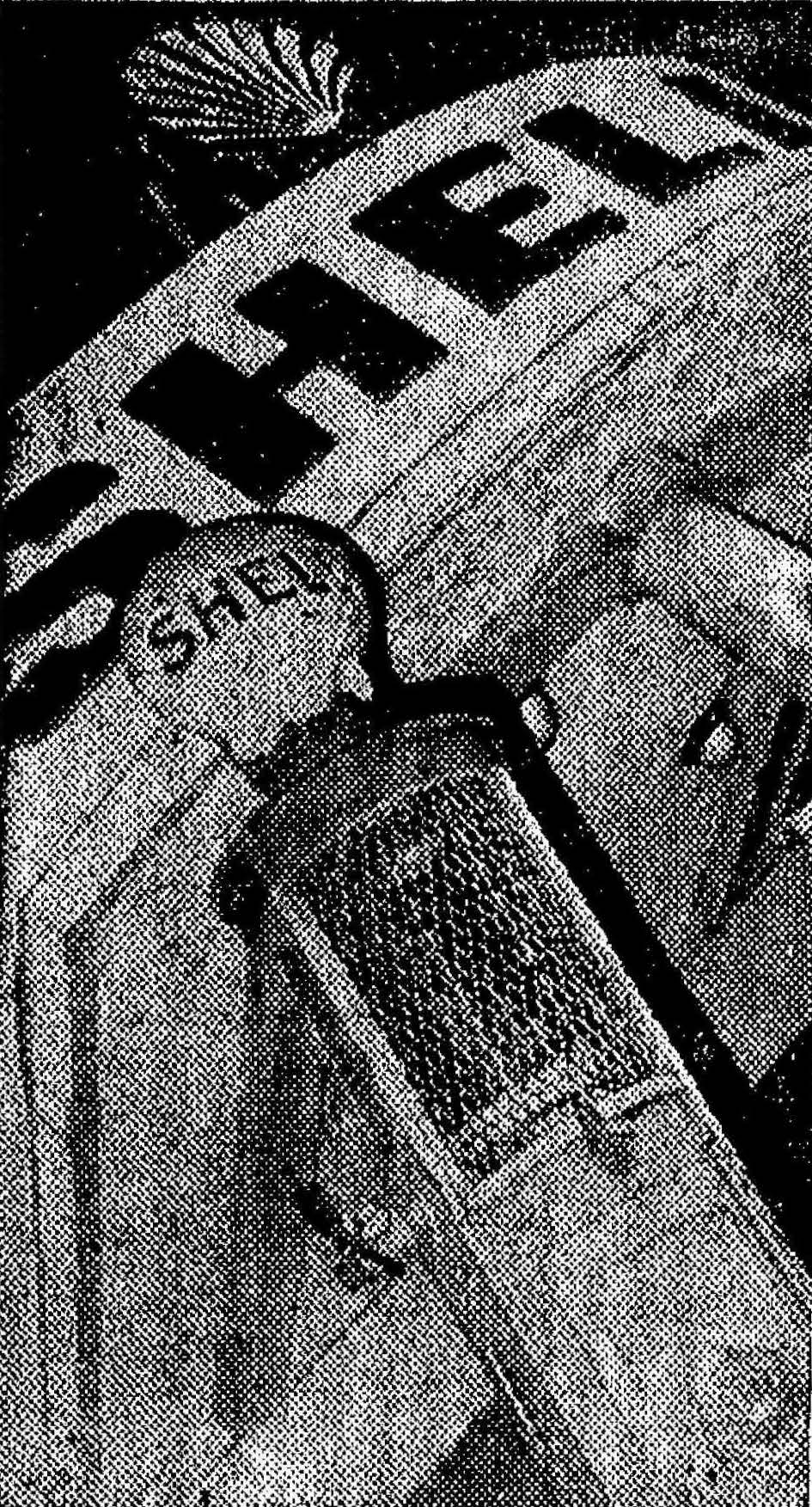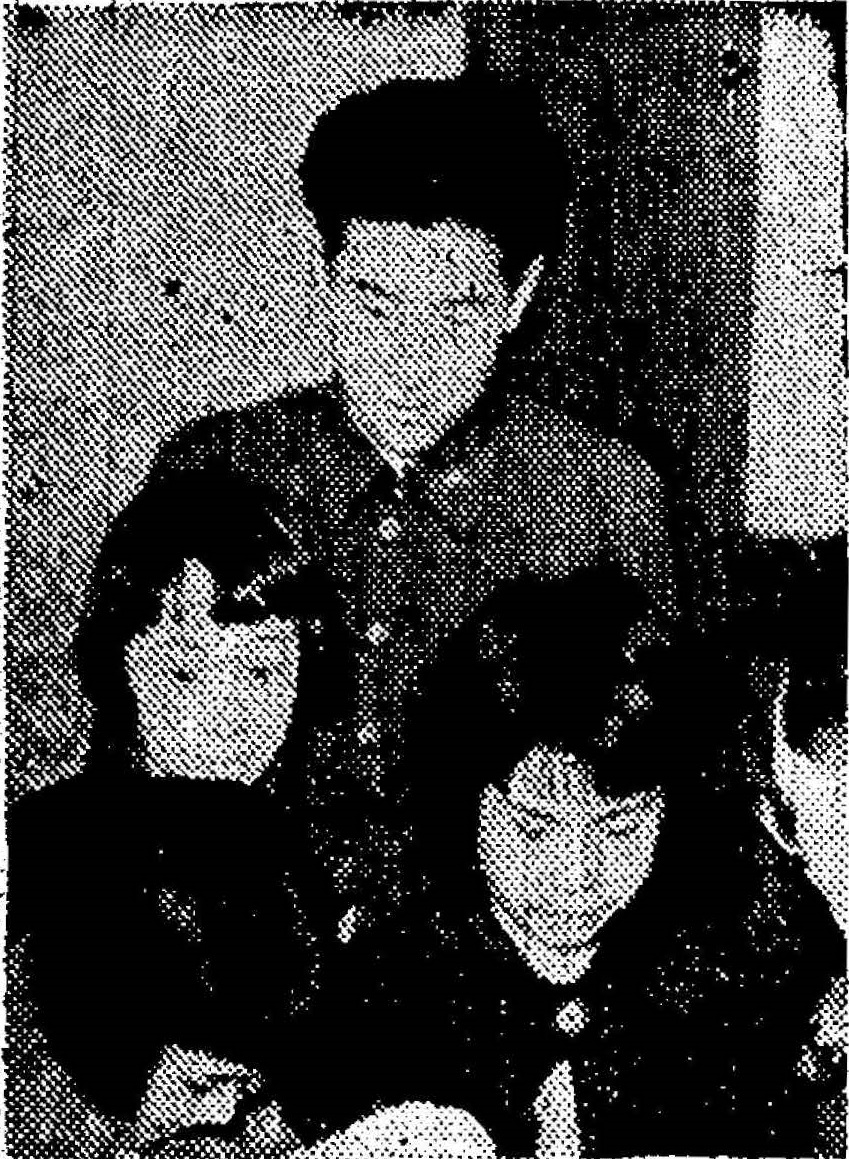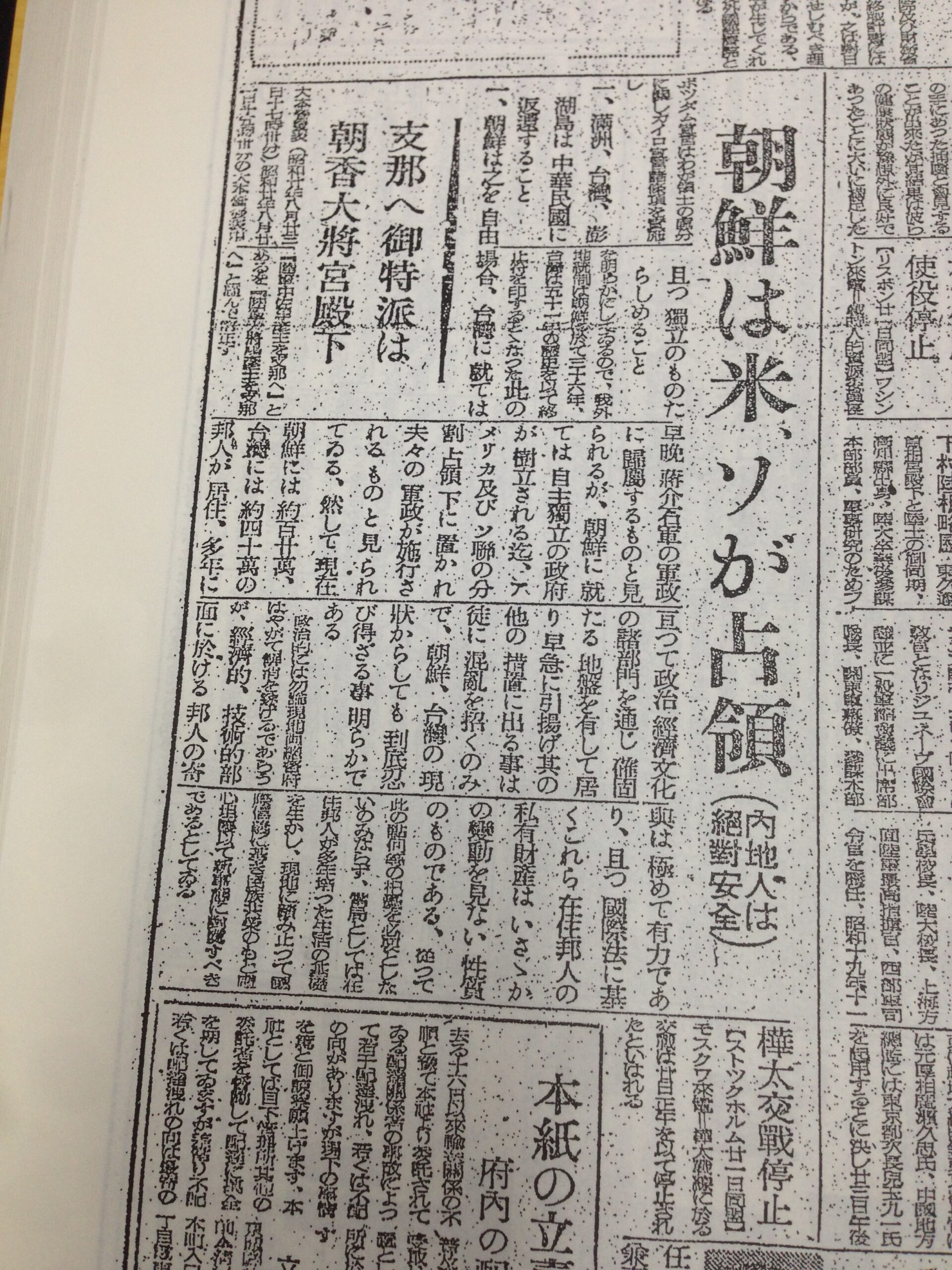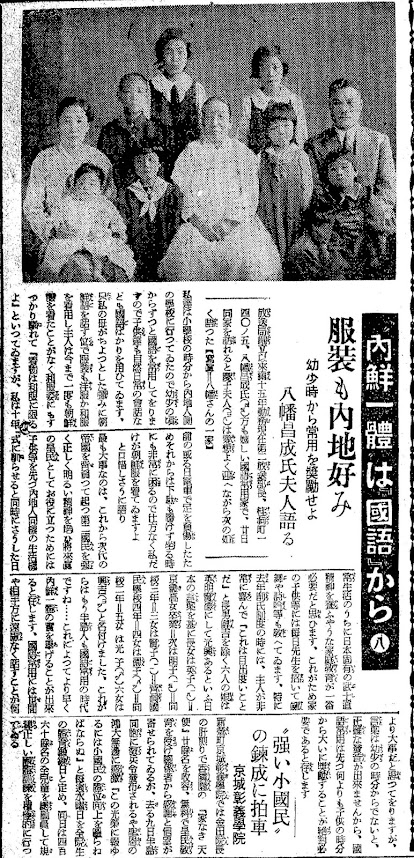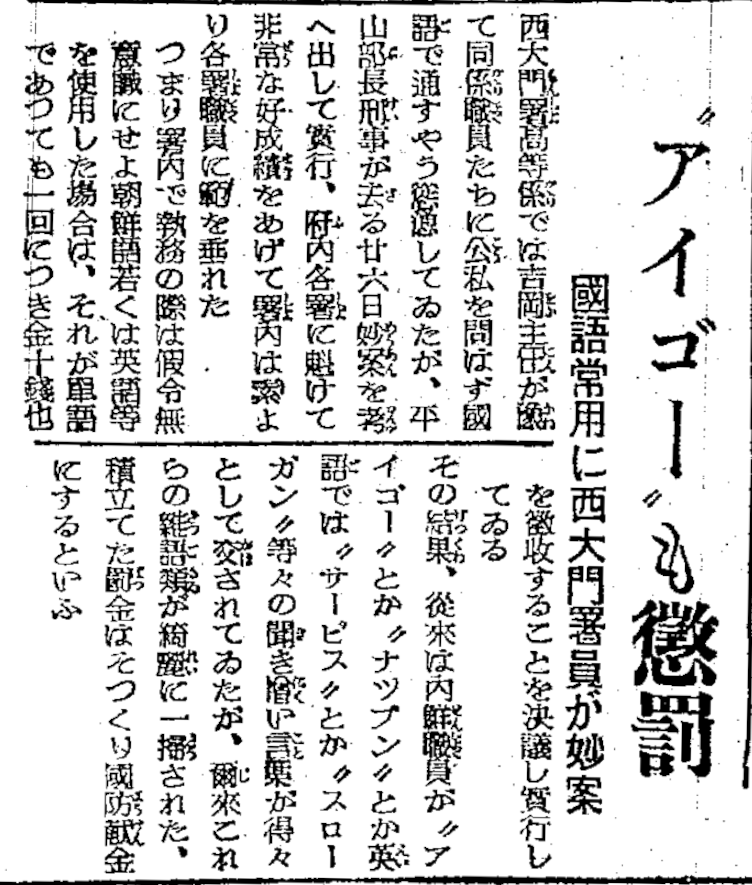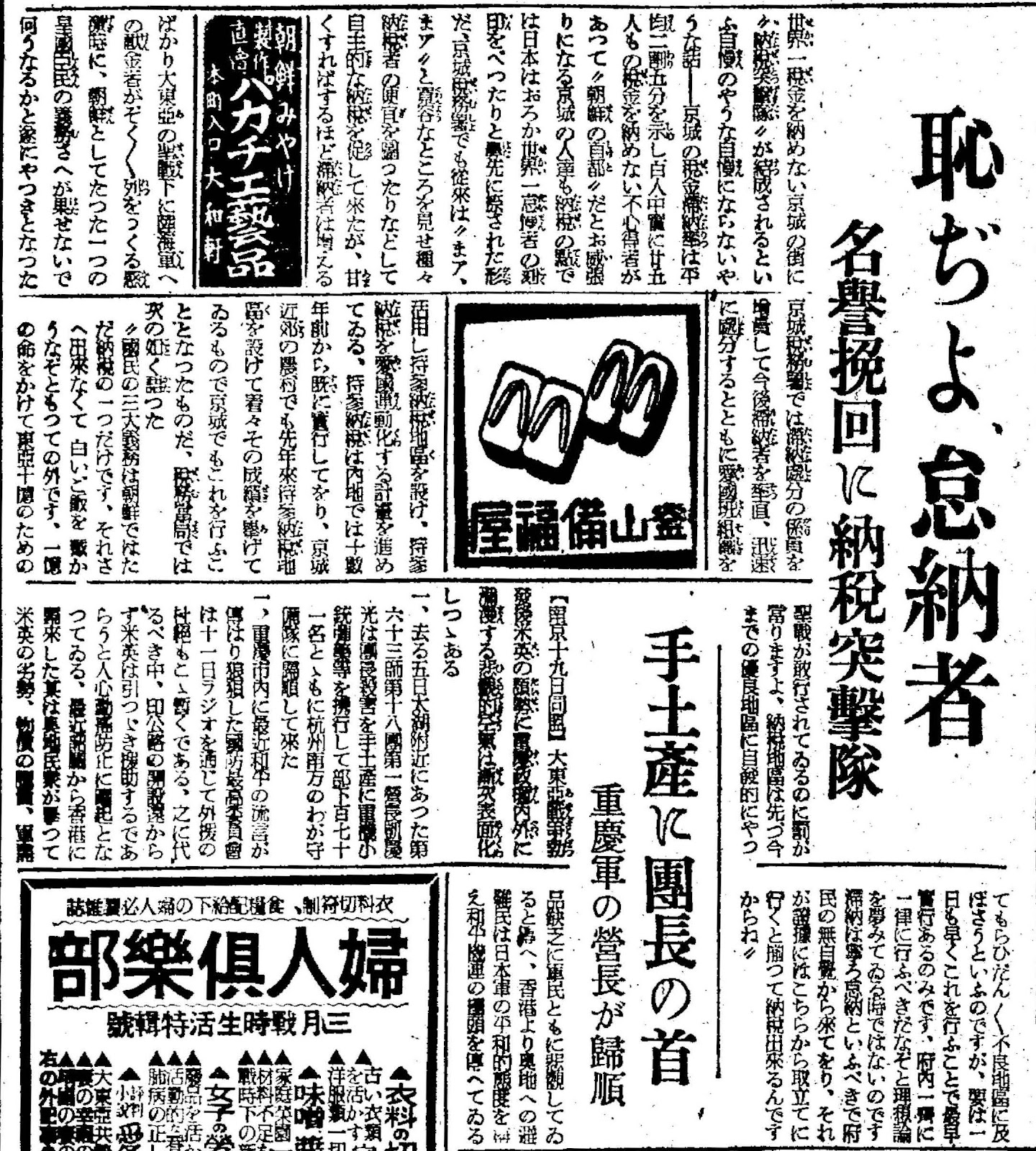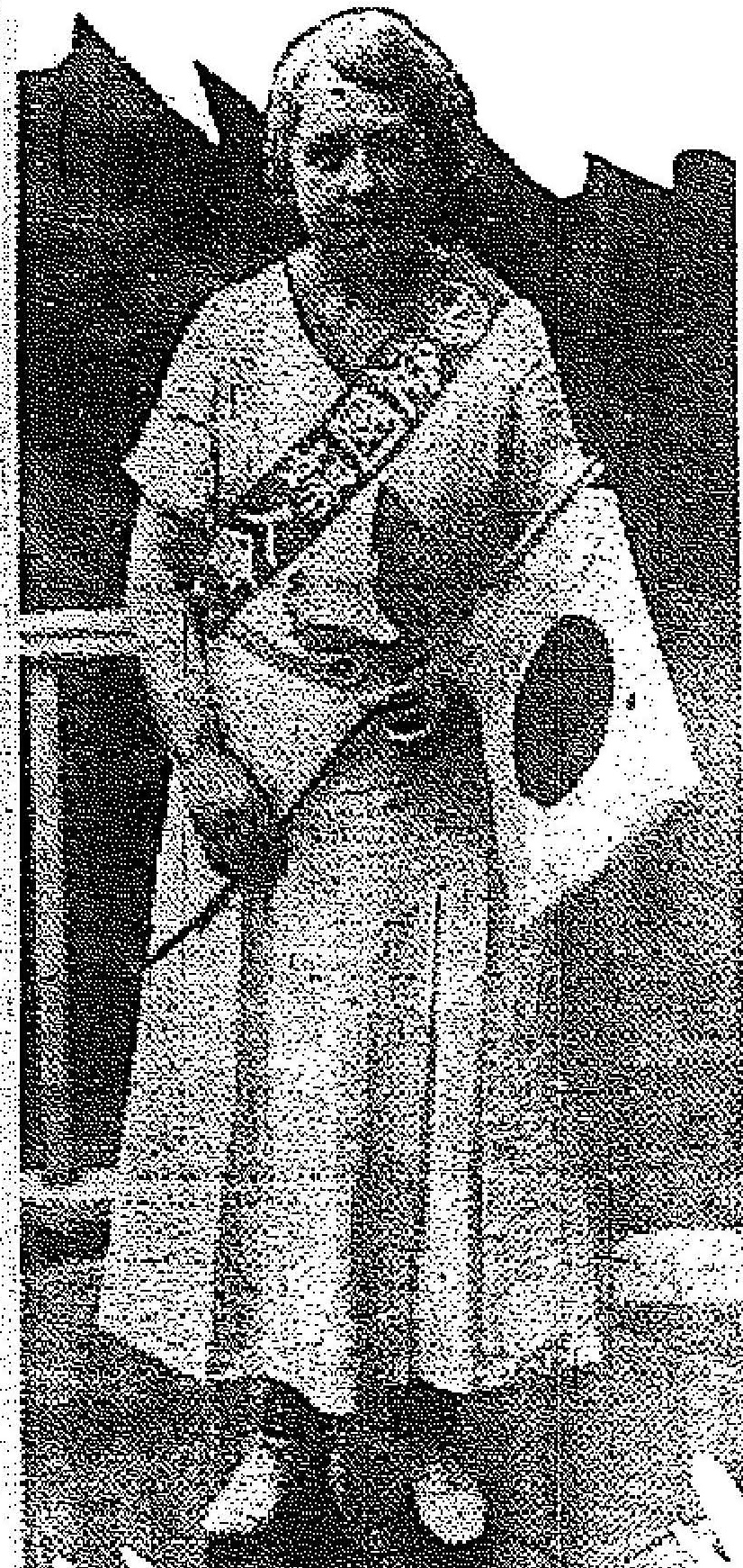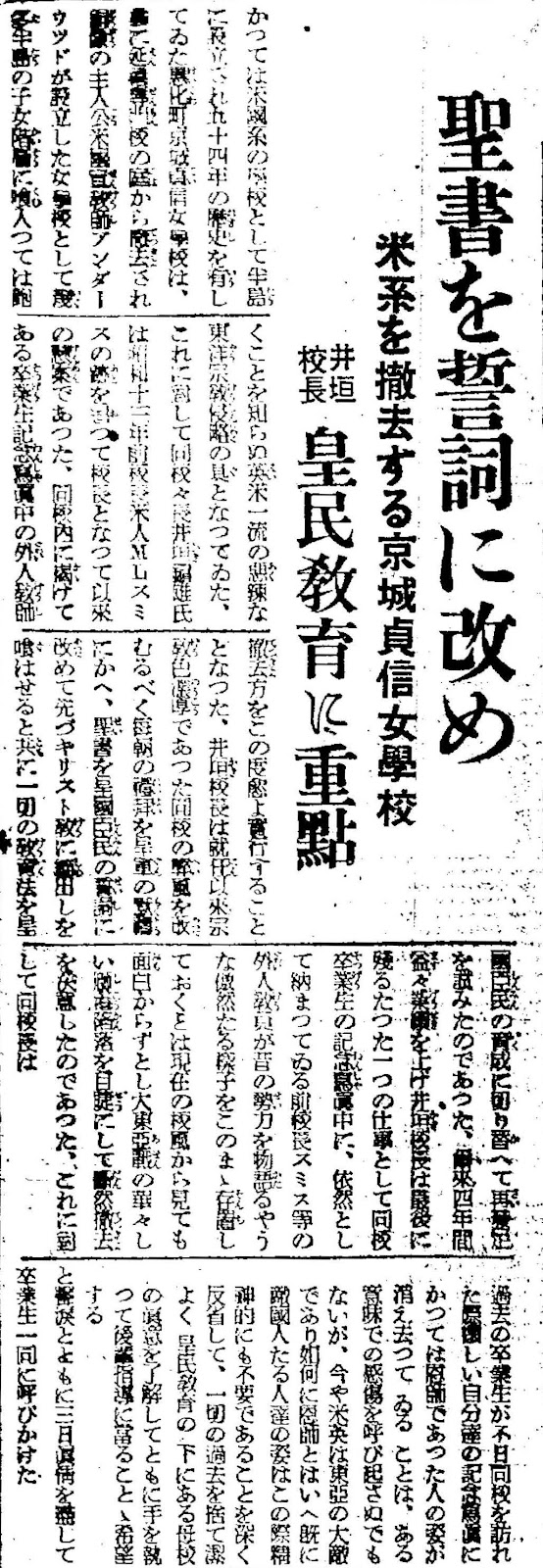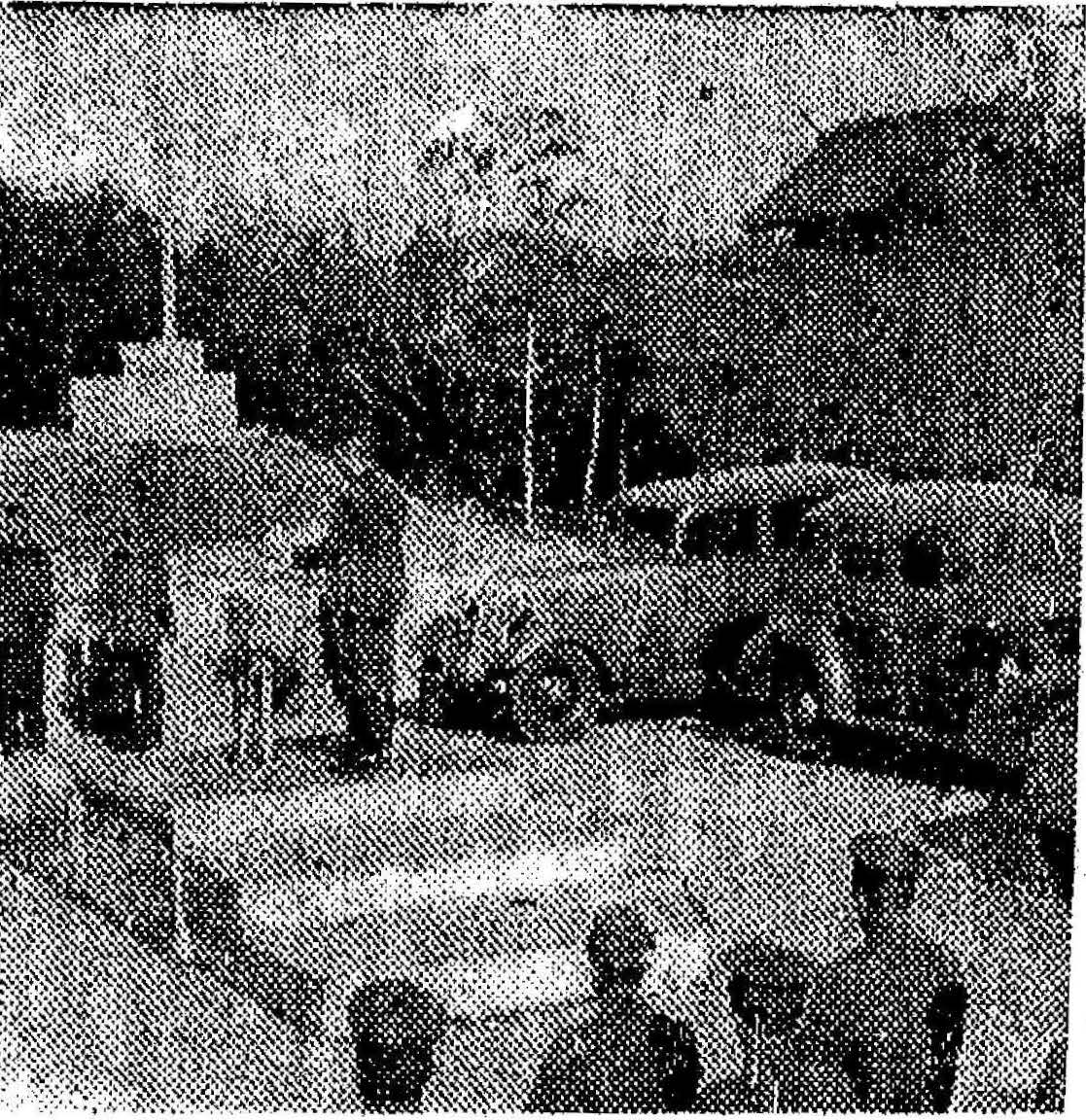
Despite Pastor Underwood’s heroic refusal to worship the Emperor, Korean churches were eventually forced to worship at Shinto Shrines and announce “we shall forsake the evil thoughts from our past dependence on the West, and strive for purification… towards a Japanese-style Christianity”
2022-12-25
541
2452
These articles are from December 1942, and they particularly stand out for their especially anti-Christian and anti-American messaging. They are part of a series of articles written to commemorate the one-year anniversary of the Pacific War against the United States, which began with the bombing of Pearl Harbor on December 7th local time (December 8th Japan time) in 1941. Setting aside the hateful content, these articles actually provide some interesting, detailed insight into the religious landscape of Korea, which apparently had a vibrant, diverse Christian scene centered on Pyongyang and northern Korea. But here, we look at it from the perspective of the colonizer. We painfully see how Western missionaries initially resisted attempts by colonial authorities to force Korean churches to worship the Emperor at Shinto Shrines and support Imperial Japan’s war effort, but those Westerners were ultimately imprisoned or deported, and the Korean churches were eventually forced into submission to the colonial regime. Like the rest of the Korean population, Korean Christians were also compelled to perform the Kyūjō Yōhai ritual (宮城遥拝) of bowing to the Emperor every morning, worship at Shinto shrines, donate church bells to the Imperial Japanese military, ‘comfort’ Imperial Japanese soldiers by visiting them on the front lines, and make humiliating public pro-Imperialist statements. Those who resisted met the fate of brave Christians like Chu Ki-chol, who was tortured and killed by colonial authorities in 1944.
These articles are also unusual in how many religious organizations and notable Western missionaries that they mention, so I’ve added various links accordingly to relevant online resources.
(Translation)
Gyeongseong Ilbo (Keijo Nippo) December 1, 1942
The supranational Christian religion: 670,000 Christians in all of Korea
The Christians once refused to worship at the Shinto shrines
Shut out the United States and Britain!
One year since [the start of the Pacific War on December 8th]
Religion Edition (Part 1)
Schools of love, gentle but holy churches, warm medical hands. In the case of the United States and Britain, all of these were tools of their conspiracy. They used all kinds of secret techniques to extract souls from the Korean peninsula. They tried to make people’s lives captive to infatuation with the United States and Britain by attracting them to the movies, and they tried to transform their thoughts into anti-East Asian ones by publishing books. In short, everything they did was a wilesome technique with fangs of cunning hidden deep inside, and they invaded like beasts by playing their magic tricks. How have their relentless efforts over the past several decades infiltrated the Korean peninsula? It is terrifying to imagine.
The Korean peninsula was about to be drained of its soul. The blow that saved it was the declaration of war on that glorious morning of December 8th. Now Japan has risen up. We are waging a thorough extermination campaign against the United States and Britain, who are insatiable in their scheming, and not letting any of their remnants remain in any corner of the land and skies over the Greater East Asia region. In retrospect, I wonder how much of the British-American coloration, condition, or the stains on the soul that had seeped into the Korean peninsula have been wiped away in that one year. I am happy to look back on it now.
Everyone must be horrified when they remember the bewitching missionary power of the Hito-no-michi Movement. There is an old saying, “The drowning man will catch at a straw.” When people cannot move beyond thinking “I want to be healed! I want money! I want my business to prosper!” and are then offered even a modicum of reasonable faith, it is probably human nature for them to immediately jump at the chance. Since this human nature is pursued with a message of “bringing humanity, peace, and wealth,” we must first look at the rate of proselytization in isolation. Once their eyes are blinded, they are unable to see even the evil clutches of ideological intrigue that are lurking behind all this. Whether this is the case or not, the rate of Christian missionary activity on our Korean peninsula is truly frighteningly high.
Although the words “religion” and “Christianity” are simply used, if we take a glance at the various denominations, it is surprisingly revealed that there are 39 different types of Christianity, including the Roman Catholic Church, the Russian Orthodox Church, the Anglican Church, the Presbyterian Church of Korea, the Korean Methodist Church, the Union of Korean Methodist Churches, the Seventh-day Adventist Church, the Oriental Missionary Society, the Universalist Church, etc. (as of the end of 1930). It is said that there are about 330,000 Christians in mainland Japan and about 670,000 Christians in Korea. Of these, the three main Christian denominations with the largest numbers of followers are the Presbyterian Church of Korea, the Korean Methodist Church, and the Roman Catholic Church.
The Presbyterian Church is divided into four groups: the Northern Presbyterian Church of the United States, the Southern Presbyterian Church of the United States, the Presbyterian Church of Canada, and the Presbyterian Church of Australia, which account for about 63% of all Christians in Korea. The next largest group is the Roman Catholic Church with 127,751 members, followed by the Korean Methodist Church with 45,844 members, in this order.
In November 1935, the American missionary McCune, principal of Pyongyang Soongsil Junior High School, refused to worship at the Pyongyang Shinto Shrine, saying, “I cannot participate in events that go against our religious doctrines.” The “Shinto shrine non-attendance issue” suddenly grabbed the world’s attention. It was a school run by the Northern Presbyterian Church of the United States. From then until February 1938, there were 18 Christian schools that adopted the resolution of not worshiping at the Shinto shrines. Not only did they refuse to worship at the Shinto shrines, but they also refused to fly the national flag or perform the 7 am Kyūjō Yōhai ritual (宮城遥拝) of bowing to the Emperor, and they barred any non-believers from entering church grounds. It was essentially no different from having a piece of America right inside Korea.
When the late Governor-General Saitō made an inspection tour of Jeongju in Northern Pyongan Province, he found that all the stores were closed, so it was no wonder that he was suspicious. It is said that it was a day of rest for Christians that day. Even the farmers had abandoned their fields and were quietly praying to God on Sunday, their day of rest. Christianity is truly a supranational entity, essentially the embodiment of the United States and Britain. Why was American and British Christianity so attractive?
The missionary activities of the Presbyterian Church began 60 years ago. The first principal of present-day Yonhee College (연희전문학교/延禧專門學校) was an American, Mr. Underwood. In 1916 at the Pyongyang Theological Seminary, he lectured on Eschatology, which is said to form the basis of the church’s doctrine, and he said, “The Earth will soon be in the grip of a great upheaval, injustice will be defeated, and a peaceful world for Christians will emerge. Only then will you be able to fully accept wealth and love.”
At the time of the First World War and the Manchurian Incident, American and British priests were already preaching with a gloating smile. Presbyterian Christianity gradually developed, first in the Hwanghae Province and then in Northern Pyongan Province. There, the weakness of human nature took on an attractive form. Since the Yi Dynasty, the people of the Hwanghae and Northern Pyongan Provinces had not been able to easily enter government service, and their paths to success and prosperity had been blocked by fate. It is not surprising that feelings of rebellion and suspicion were deeply rooted in the hearts of the people of the region.
Because they were promised love, wealth, and peace, all of which could be obtained by praying to Jesus Christ, they became Christians. The methods and means of Christian missionary work have been carried out by skillfully exploiting the same weakness of the human heart. Looking at this in retrospect, it can be said that the ideological schemes of the United States and Britain have steadily succeeded by first borrowing the appearance of a holy religion. This is why 99% of the religious believers of the Korean peninsula are people who make the sign of the cross.
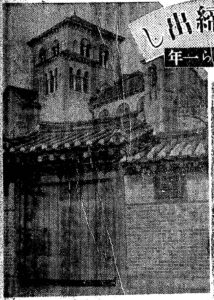
Source: https://www.archive.org/details/kjnp-1942-12-01
Gyeongseong Ilbo (Keijo Nippo) December 2, 1942
Daring to cut off relations with the United States and Britain
The all-out march to complete the conquest
The movement to donate the ‘bells of peace’
Shut out the United States and Britain!
One year since [the start of the Pacific War on December 8th]
Religion Edition (Part 2)
It was July 7, 1937. The Imperial cry for justice that broke the skies over northern China simultaneously triggered a great awakening on the Japanese home front. The momentum to live up to the true mission of the ancestral land was rising in all quarters. Even on the Korean peninsula, which is just a stone’s throw away from Genkai, Kyūshū, the waves of history surged forward without restraint. On October 1938, the 27th session of the Presbyterian Church of Korea was held in Pyongyang, and they suddenly passed a resolution to worship at Shinto shrines. Later that year, a Christian delegation for comforting the Imperial Army, led by believer Fumio Matsubuchi, was dispatched to the front lines in Beijing, Tianjin, and Taiyuan. The following year in 1939, the 28th General Conference actively demonstrated its cooperation toward promoting hard work and diligence, and at the same time, passed epoch-making resolutions such as cutting off relations with Western missions and placing seminaries under the management of the General Conference. Next, in September 1940, the 29th General Conference made an explosive declaration towards the establishment of a Japanese-style Christianity. They made a resolution which included amendments to the Presbyterian Church Constitution and the confiscation of all foreign-owned institutions.
On November 10 of the same year, the Presbyterian Church issued an outline of reforms based on the following guiding principles: “Based on the true principles of National Identity, we shall adapt ourselves to national policies, forsake the evil thoughts from our past dependence on the West, and strive for purification and reformation towards a Japanese-style Christianity. We shall devote ourselves to selfless devotion in our respective fields of work and strive to build a New East Asian Order through concerted effort and faith.” Indeed, the hand of fire which will destroy Western liberalism has arisen from within the Christian community.
On December 6 of the same year, the Union of Korean Presbyterian Churches was formed. The then Superintendent General Ohno and other government and private officials attended the meeting. Eight hundred faith representatives nodded their heads deeply in the sacred space of the Chōsen Shrine and pledged their devotion as Imperial people. Taking advantage of the momentum, a convention was held for three days starting on the same day to commemorate the 2,600th anniversary of the birth of Japan’s first emperor. The Spirit of the Imperial Way was uplifted, and the National Structure Clarification Movement was deployed. On April 29, 1941, on the occasion of the Emperor’s birthday, 200 female evangelist representatives and 1,500 ordinary female believers held an Imperial birthday dedication ceremony in the presence of then Governor-General Minami. Following the ceremony, internal reforms were made by the Christians, one after another, including lectures on current affairs that were held over a three-day period. In August, when diplomatic relations between the United States and Japan were in danger of coming to a head, the Second Declaration of Reform was issued as follows.
“The provocative attitude of the United States, Britain, and other hostile nations toward Imperial Japan is becoming more and more blatant, and they are becoming more and more frantic to obstruct the establishment of the East Asia Co-prosperity Sphere, which is the unshakable national policy of Imperial Japan. My dear friends of the Faith, we pledge to you that we will always be mindful of this grave situation, and that we will make an all-out national effort, both materially and spiritually, to serve the cause of the Sacred Will of God through our selfless devotion to the nation.”
Along with this clear declaration, the Union listed as practical matters the upliftment of spiritual life, reforms in daily life, the practice of service in accordance with the times, and reforms in church governance. Then they declared a definitive break with the Christian culture which they had blindly believed to be the best. On December 8, the Imperial Edict of War against the United States and Britain was issued. The more than 600,000 Christians on the Korean peninsula also rose up with the pride of the Imperial people in their hearts and minds. The Pyongyang Jang Dae Hyun Church (장대현교회/章臺峴敎會) started a church bell donation campaign on the occasion of Christmas in the same year. They donated the church bells, whose knell was said to symbolize peace and freedom, as weapons to be used against the United States and Britain.
The Presbyterian movement spread to all of Korea, and by the end of April 1942, the number of bells donated by 18 denominations totaled 2,200 bells weighing a total of 34,668 kan (130,005 kg). However, these acts of sincerity are still continuing. In addition, at the end of last year, they donated one military aircraft each to the Imperial Army and Navy, in March of this year they donated 70 pieces of heavy machinery, and in November they donated three cars for use by patients.
In addition, lectures on the current situation and Japanese language courses have been held in various locations. At the 31st General Conference held in Pyongyang from October 15 of this year, all the services, proceedings, and sermons were conducted in the Japanese language. This fact tells us more than anything about the subsequent trends of these Christians. I am sure that hymns will be sung in Japanese in the near future.
I may have spoken too much about the Presbyterian movement, but the Roman Catholic Church and the Methodist Church are following in similar footsteps. Even after the outbreak of the Greater East Asia War, the priests of the Roman Catholic Church did not accept the order to return to their home countries, and they are still on the Korean peninsula. The Diocese of Daegu welcomed Dr. Hayasaka, a doctor of theology, as its bishop in October of this year. Gwangju in Jeollanam-do will soon welcome a mainland Japanese bishop as well. This momentum will gradually take place in the various other denominations as well. Their weekly publication, the “Christian Newspaper,” is published by the Korean Book Publishing Company, and the printing and publication of hymns, Bibles, and other materials is gradually following this momentum. [Photo: The dedication ceremony by a meeting of elders of the Presbyterian Church]
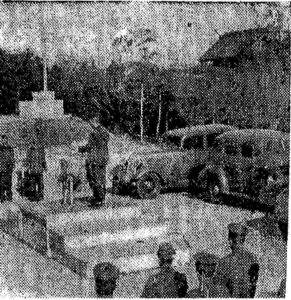
Source: https://www.archive.org/details/kjnp-1942-12-02
(Transcription)
京城日報 1942年12月1日
全鮮に六十七万、超国家的の基督教
嘗ては神社参拝拒否
米英締め出し
あれから一年
宗教篇(上)【1】
愛の学校、優しくも聖なる教会、温かい医療の手。それらの悉くが米英の場合、謀略の手段だったのだ。彼等は半島からその魂を抜くために凡ゆる秘術を尽くした。映画に引きつけてはその生活を米英心酔の虜とし、出版物をもっては思想を反東亜的に変質しようとした。挙げ来れば、一切が狡智の牙を奥底に秘めた当意即妙な技術であり、その阿漕的魔術を弄しては妖獣のような侵略をとって来たのだ。過去幾十年、彼等がなし来った執拗な所為は如何にこの半島に浸潤したか。思えば慄然たるものがある。
魂を抜き去られようとした半島。それを救った一撃こそは十二月八日あの輝かしき朝の宣戦なのだ。今や日本は起ち上っている。謀略飽くなき米英に対し大東亜の天地、どの片隅にも残存許さじと徹底的放逐を喰わせている。翻ってあれ程半島に滲みこんでいた米英的色素、容態、いや魂のしみ、それらが如何に”その一年”に拭い去られて行ったか。今嬉しくも回顧してみよう。
『ひとのみち教』の妖しげな布教力を思い出せば誰しもが慄然となるに違いない。溺れる者は藁をも掴む、という譬えもあるほどだ。病気が癒りたい、金が欲しい、商売繁昌するように、などの考えから一歩も出できらない人間だもの其處に多少でも筋道のたった信仰を与えたならば、一も二もなく飛びついて来るのは蓋し人情だろう。その”人情”に『人類と平和と富とを齎すもの』と吹き込んでかかれば、先ず布教率は単点とみなければならぬ。よしんばその裏に思想謀略の魔手が潜んでいるようとも一度眩んだ眼には映りっこない。それかあらぬか、わが半島におけるキリスト教の布教率は正に恐ろしいばかりの高率を示しているのだ。
簡単に宗教だ、キリスト教だと一口にいうが、その教派を一瞥するならば、キリスト教の部として天主公会堂、露国聖教会、英国聖公会、朝鮮耶蘇教長老会、朝鮮監理教団、同聯合会、第七日安息日耶蘇再臨教、東洋宣教会、ユニバーサリスト教など三十九種類(昭和十五年末調)からあるというから驚くではないか。キリスト教徒は内地で約三十三万、朝鮮では約六十七万人といわれている。そのうちでも最も多数の信徒を持っているのは何といっても朝鮮耶蘇教長老会、朝鮮監理教団、天主教の三派である。
長老会は米国北長老派、同南長老派、加奈陀長老派、濠洲長老派の四派に分かれ、全キリスト教徒の約六十三パーセントを占めている。次いで天主教の十二万七千七百五十一人、監理教団の四万五千八百四十四人といった順序である。
昭和十年十一月、平壌崇実中学校長米人宣教師マッキュームは”教義に悖る行事には参加出来ない”といって平壌神社参拝を拒否したことから、”神社不参拝問題”は俄然世の視聴をひいた。米国北長老派の経営学校であった。これより十三年二月迄の間に神社不参拝の態度を決議したキリスト教系学校は十八校に及んだ。神社不参拝は愚か国旗を絶対に掲揚せず宮城遥拝を行わず、教会内には異教徒を一歩も入れないなどまるっきりアメリカが朝鮮内に在るのと変らなかった。
故斎藤総督が平北定州を巡視したところ、軒並に閉店休業していた。不審に思ったのも道理。その日はクリスチャンの休息日であったという珍事が伝えられている。日曜日を安息日とするのはまだしも百姓さんさえ田畑を見放して静かに神を祈っている始末であった。キリスト教は正に超国家的存在であり、米英そのものであったわけだ。米英系のキリスト教は何故かくも魅力があったのか。
長老派教会の伝道は今から六十年前に始められた。現延禧専門学校の初代校長米人アンダーウッドその人によるものである。大正五年、同教会の教義の根本をなすといわれる『末世学』が平壌神学校で講義された。『地球上にやがて大動乱が訪れる。そして不正は敗れ、キリスト教徒の平和境が現出する。その時こそ汝等は富と愛とを充分受け入れられるであろう』というのである。
第一次欧州大戦、満州事変当時、既に米英人神父はほくそ笑みながら説教していたのである。長老派系のキリスト教はまず黄海道、平南北道を根拠地として次第に発展していった。そこには人情の弱さが恰好な形であったのだ。李朝時代から黄海、平南北の人々は容易に官途につけず従って立身栄達の道が運命的塞がれていた。反発、猜疑の情が同地方の人心深く根ざしていたのは当然である。
愛と富と平和と、キリストを祈ればその凡てが得られるというのだから、我も人もキリスト教徒になっていったのだ。キリスト教布教の方法手段は同様の人心の弱さを巧みに利用して行われて来たのである。之を裏からみれば米英の思想謀略はまず聖なる宗教の姿を借りて着々成功して来たものといえよう。かくて宗教を信ずる半島の九割九分は胸に十字を切る人々となったのである。
京城日報 1942年12月2日
敢然、米英と絶縁
征戦完遂の総進軍
”平和の鐘”も献納運動
米英締め出し
あれから一年
宗教篇(下)【2】
昭和十二年七月七日。北支の空を破った帝国の正義の叫びは同時に日本銃後へ一大覚醒を促した。祖国の真使命に生さんとする機運は各方面に勃然と起った。玄海を一つ隔てた半島にも歴史の巨濤は遠慮なく押し寄せたのである。昭和十三年十月、平壌に開かれた朝鮮耶蘇教長老会第二十七回議会は俄然、神社参拝を決議した。そして同年暮れ、信徒松淵文雄氏を団長とするキリスト教徒の皇軍慰問団は北京、天津、太原の各第一線に総出されたのである。翌十四年第二十八回総会では精勤への協力を積極的に示し、同時に欧米宣教団との絶縁、神学校を総会の経営下に置くなどの画期的決議を行った。次いで十五年九月第二十九回総会は日本的キリスト教の確立へ向かって爆弾的宣言がなされた。即ち長老会憲法の改正、外国人経営各機関の接収などを決議し、同年十一月十日、
『国体の本義に基き国策に順応し、過去の欧米依存の邪念を禁絶して日本的キリスト教への純化更生に努むると共に教徒は各各その職域に於いて滅私奉公の誠を捧げ、協信戮力東亜新秩序の建設に邁進せんことを期す』との指導原理以下の項目に亘る革新要綱を発表。茲に欧米自由主義撃滅の火の手は実にキリスト教徒の内部から上がったのである。
同年十二月六日、朝鮮耶蘇教長老会聯盟を結成。時の大野総監以下官民が列席。信徒代表八百が朝鮮神宮の神域に深く頷いて皇民としての奉公を誓ったのである。その余勢を駆って同日から三日間紀元二千六百年記念信徒大会を開催。皇道精神の昂揚、国体明徴運動を展開。十六年四月二十九日天長の佳節に際しては婦人伝道師代表二百名と一般婦人信徒一千五百名が時の南総督臨席の下に天長節奉賀式を挙行。引き続き三日間に亘り時局講演会を開催する等キリスト教徒の内部革新は次々に行われていった。斯くて日米国交が一触即発の危気を孕む八月第二回革新宣言がなされた。
『米英など敵性国家の帝国に対する挑戦的態度は益々露骨となり、帝国不動の国是たる東亜共栄圏確立の妨害に狂奔しつつあり、親愛なるわが教友は須らくこの重大なる時局を洞察し、物心両面に亘る国民的総力を挙げて挺身報国以て聖旨に副い奉らんことを誓う』
この明確なる宣言と共に実践事項として精神生活の昂揚、日常生活の革新、時局奉仕の実践、教制革新などを挙げ、彼等が最高と盲信して来たクリスチャン文化への断然決別を宣したのである。十二月八日、米英に対する宣戦の大詔は下った。半島六十余万のクリスチャンもまた等しく皇民の誇りを強く身内に蔵して起ち上った。平壌章台峴教会は同年のクリスマスを期して献鐘運動を開始した。あの平和と自由とを象徴して鳴るといわれた鐘を米英を撃つべき武器に、と献じたのである。
長老派のこの快挙は全鮮に拡がり、十七年四月末までに供出された鐘は十八教派二千二百箇三万四千六十八貫に上がった。然もこの赤誠は未だに続けられているのだ。このほか昨年末には陸海軍へ軍用機を各一機宛、本年三月には重機七十基を、同じく十一月には患者用自動車三台を献納したのである。
このほか各地で時局講演会を、また国語講習会を開催して来た。本年十月十五日から平壌に開かれた第三十一回総会は礼拝、議事説教の凡てが全部国語で行われた。この事実こそ彼等キリスト教徒のその後の動向を語って余りあるではないか。やがては讃美歌も国語で唄われるに違いない。
長老派の動向を語り過ぎたかもしれないが、天主教、監理教団もまた同様の足取りを力強く辿っているのだ。天主教の各神父は大東亜戦開戦後も帰国命令を肯んせず、いまなお半島に留まっている。大邱教区は本年十月神学博士早坂氏を司教に迎えた。全南光州でも近く内地人司教を迎える筈だし、この機運は漸次各教派を通じて行われるだろう。彼等の機関紙週間『キリスト教新聞』も朝鮮書籍出版会社で発行されているし、讃美歌、聖書などの印刷発行も次第にそうした機運を辿ろうとしているのだ。【写真=長老会の献納式】
